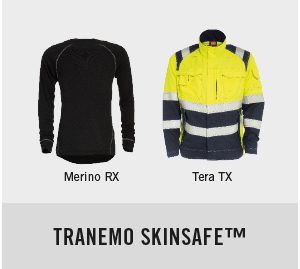
MINING
The mining industry is becoming increasingly automated and has very high safety standards. This also brings new risks, as the mines are deeper, the machines are larger, production rates are higher and there is more traffic in mines. Much of the work carried out in mines and open-cast mines involves hazardous environments, below and above ground. Common risks include dust, gases, chemicals, working at heights, limited visibility, moving vehicles, fire and risks associated with blasting and flooded shafts. Where risks cannot be avoided it is important to use the right personal protective equipment. Protective clothing that is certified to EN ISO 20471 improves visibility when working near the large vehicles that are used in the mining industry. Mining work may also require protective clothing with other important certifications, depending on the nature of the work, such as EN 1149-5, EN ISO 11612 and EN ISO 11611.
RISK ASSESSMENT
- Traffic accidents (vehicles in opencast and underground mining)
- Flame & Heat
- Risk of explosion/ATEX-environment (limited)
- Electric Arc (limited)
- Welding sparks (limited)
RISK EVALUATION
When working in a mining environment, garments certified in accordance to EN ISO 20471 are needed to ensure visibility when working around vehicles in an opencast and underground mine. Large vehicles may have large blind spots and therefore High Visibility garments are crucial. Working in an ATEX-environments (such as handling explosives or working in the presence of methane/natural gas in the underground) Tranemo recommends garments certified according to standard EN 1149-5 in combination with EN ISO 11612. The Anti-Static properties of a garment minimise the risk of creating sparks (a source of ignition) which could cause an explosion. The majority of our FR garments are EN 1149-5 certified and have Anti-Static fibres mixed into the fabrics. If a garment has metal details they have to be covered during use according to the EN design requirements.
In mining, most workers are engaged with maintenance and infrastructure work and for electricians, there is also a risk of Electric Arc. With the right solution of clothing marked EN 61482-2, the impact of these risks will be minimised. A Tranemo Skinsafe™ system with an outer layer that complies with PPE 2 and has an Arc Rating (ATPV or EBT value, according to NFPA 70E) above 8 cal/cm² is recommended.
All our Electric Arc garments have the Arc Rating value stated on the outside FR label to make it easy for you to choose the right protection. In the revised standard, EN 61482-2, ELIM is used as the Arc Rating value. As additional information the ATPV/EBT value can also be stated and refers to the Risk Assessment standard NFPA 70E. All new products will be tested according to EN 61482-2 and marked with both the ELIM and ATPV/EBT values. During the transition period, Tranemo will update new stock garments certified according to EN 61482-2, meaning garments may therefore have both markings.
For occasional welding, the fabric also needs to pass EN ISO 11611 or use welding accessories to offer further protection.

